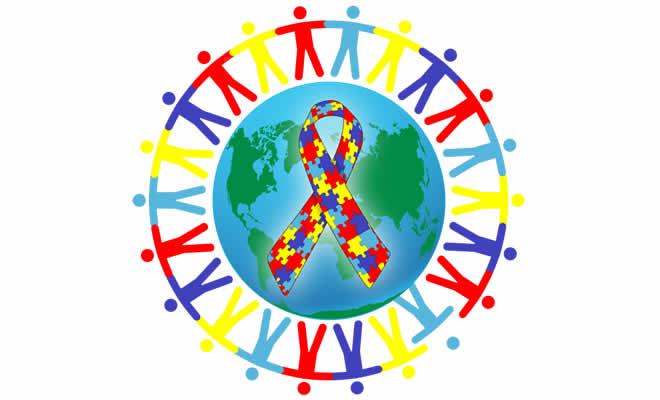συγγραφέας Δαλαμάγκα Μαρία
Τι είναι πόνος ;
Προσδίδουμε διαφορετικούς χαρακτήρες στο πόνο. Αν ένα παιδί τραυματιστεί , θα κλάψει και θα πει «έχω πληγή».Η μητέρα θα ρωτήσει: που πονάει αγάπη μου; Σκεφτείτε ότι πρόκειται για δυο διαφορετικές προσεγγίσεις στο πόνο : 1.Το συναισθηματικό στοιχείο του πόνου , που είναι φυλογενετικά πρωτόγονο και ασχολείται με το πόνο σαν κάτι δυσάρεστο , που πρέπει να αποφεύγεται και το τελευταίο πιο πρόσφατο : 2.το διακριταίο στοιχείο του πόνου , που είναι η ικανότητα να αντιλαμβάνεται ακριβώς που είναι ο πόνος και να ανταποκρίνεται κατάλληλα.
Πόνος στο φλοιό
Συνηθιζόταν να λέγεται ότι οι δομές του φλοιού μόνο επιφανειακά ασχολούνται με την αντίληψη του πόνου, αν όχι και καθόλου. Αυτό είναι λάθος , καθώς ένα πλήθος συνδέσεων , συνδέουν υψηλότερες δομές του φλοιού με κέντρα του πόνου στο θάλαμο και το εγκεφαλικό στέλεχος. Σημαντικές δομές του φλοιού είναι :
Ο πρωτεύων αισθητικός φλοιός (sensory cortex )
O δευτερεύων αισθητικός φλοιός
Το πρόσθιο τμήμα του κεντρικού λοβού των εγκεφαλικών ημισφαιρίων ( insula )
Η προσαγωγός έλικα
Ο πρωτεύων αισθητικός φλοιός είναι υπεύθυνος για τον εντοπισμό του πόνου . Η προσαγωγός έλικα σχετίζεται με το συναισθηματικό στοιχείο του πόνου.
Ο θάλαμος
Ο θάλαμος είναι ο κεντρικός σταθμός μετάδοσης του πόνου. Αρκετοί από τους πυρήνες του ασχολούνται με το πόνο. Οι πλάγιοι πυρήνες ασχολούνται με το αισθητικό / διακριταίο στοιχείο του πόνου και οι έσω πυρήνες με το συναισθηματικό στοιχείο του πόνου.
Μεσεγκέφαλος
Υπάρχει ένα πλήθος δομών που σχετίζονται με το πόνο στο μεσεγκέφαλο .Το μεγαλύτερο μέρος αυτού του κυκλώματος σχετίζεται με το συναισθηματικό στοιχείο του πόνου , με εκτεταμένες συνδέσεις με το δικτυωτό σχηματισμό του εγκεφαλικού στελέχους. Σημαντικά στοιχεία είναι τα εξής :
Η περιϋδραγώγειος φαιά ουσία
Ο ερυθρός πυρήνας
Ο πυρήνας του Darkschewitsch
Ο διάμεσος πυρήνας του Cajal
Ο σφηνοειδής πυρήνας και ο πυρήνας του Edinger – Westphal
To εγκεφαλικό στέλεχος
Το πιο σημαντικό κέντρο του πόνου στη γέφυρα είναι ο locus coeruleus (υπομέλανας τόπος) .Αυτός περιέχει νοραδρεναλίνη και νευρώνες που ρυθμίζουν το πόνο μέσω οδών, που κατέρχονται προς το νωτιαίο μυελό.
Ο προμήκης μυελός
Συμμετέχει επίσης στο συναισθηματικό στοιχείο του πόνου. Σημαντικός είναι ο γιγαντοκυτταρικός πυρήνας και ο πλάγιος δικτυωτός πυρήνας.
Ο νωτιαίος μυελός
Παραδοσιακά υπήρχε η άποψη ότι οι περισσότερες ίνες του πόνου (Αδ και C ) εισέρχονται στη φαιά ουσία των οπισθίων κεράτων του νωτιαίου μυελού. Στη συνέχεια συνάπτονται διαμέσου της ανιούσας οδού με τη νωτιαίοθαλαμική οδό. Στη πραγματικότητα , οτιδήποτε πάνω από το 40% των αισθητικών ινών εισέρχεται στη κοιλιακή ρίζα.
Υπήρξε μεγάλος ενθουσιασμός όταν περιγράφηκε για πρώτη φορά η θεωρία της πύλης (gate control ) .Αν και ο μηχανισμός έχει πλέον τεκμηριωθεί και έχει κλινική xρήση , είναι γνωστό ότι αποτελεί μια απλοποίηση. Η βασική ιδέα είναι ότι το εισερχόμενο ερέθισμα του πόνου μπορεί να διακοπεί από άλλα ερεθίσματα , διότι πολλά νευρικά κύτταρα επικοινωνούν μεταξύ τους στο οπίσθιο κέρας. Οι πιο σημαντικές ίνες οι οποίες εισέρχονται από τη περιφέρεια στο ραχιαίο κέρας είναι :
Αμύελες C ίνες που είναι σημαντικοί μεταφορείς του μεγάλης διάρκειας πόνου , που προκαλεί το χειρουργικό τραύμα.
Λεπτές εμμύελες Αδ ίνες που σχετίζονται με έναν πιο εντοπισμένο πόνο.
Αβ ίνες που φέρουν πληροφορίες σχετικά με την αντίληψη της θέσης από τη περιφέρεια προς το νωτιαίο μυελό
Δυσάρεστα ερεθίσματα που εισέρχονται δια των C ινών μπορούν να κατασταλούν με ταυτόχρονη διέγερση των Α-δ ινών (ερέθισμα υψηλής έντασης και χαμηλής συχνότητας , όπως για παράδειγμα με βελονισμό ) ή από ερεθίσματα που διέρχονται από τις Α-β ίνες. Για παράδειγμα TENS : διαδερμική ηλεκτρική νευρική διέγερση και η απλή τριβή του δέρματος , η οποία είναι πολύ καλά γνωστή από τις μητέρες , ότι ελαττώνει την αντίληψη του πόνου.
Ανιούσα οδός
Νωτιαίο-δίκτυο- διεγκεφαλική οδός: έχει λίγους έως καθόλου υποδοχείς οπιοειδών . Έχει ελάχιστη σχέση με την αντίληψη του πόνου , ως οδυνηρό ερέθισμα.
Κατιούσα οδός
Εξίσου σημαντικές είναι οι ίνες, που κατέρχονται από το εγκεφαλικό στέλεχος στο νωτιαίο μυελό για να τροποποιήσουν τα εισερχόμενα ερεθίσματα. Νευροδιαβιβαστές είναι η νοραδρεναλίνη ειδικά στο υπομέλανα τόπο (locus coeruleus) και η σεροτονίνη στο raphe nuclei.Οι υποδοχείς των οπιοειδών είναι ιδιαίτερα εμφανής εδώ.
Πόνος στη περιφέρεια
Οι περισσότεροι ιστοί περιέχουν ειδικούς υποδοχείς του πόνου , οι οποίοι ονομάζονται αλγοϋποδοχείς (nociceptor ).Στο παρελθόν πίστευαν ότι το επώδυνο ερέθισμα γινόταν αντιληπτό μέσω υπερδιέγερσης των υποδοχέων. Αυτό είναι λάθος. Η ποιότητα του πόνου φαίνεται να εξαρτάται από τη περιοχή διέγερσης και τη φύση των ινών που διαβιβάζουν την αίσθηση του πόνου. Ακόμη και στη περιφέρεια , υπάρχει μια διάκριση ανάμεσα στο οξύ άμεσο πόνο («ο πρώτος πόνος») διαβιβαζόμενος από τις Αδ ίνες και ο παρατεταμένος δυσάρεστος καυστικός πόνος , που διαβιβάζεται από μικρότερες αμύελες C ίνες.
Οι αλγοϋποδοχείς έχουν πολλούς διαφορετικούς υποδοχείς στην επιφάνεια τους , που διαμορφώνουν την ευαισθησία τους στη διέγερση. Αυτοί περιλαμβάνουν τους GABA , τη βραδυκινίνη , την ισταμίνη , τη σεροτονίνη , τους υποδοχείς της καψαϊκίνης , τα οπιούχα , αλλά οι ποικίλοι ρόλοι αυτών των υποδοχέων ελάχιστα αναφέρονται.
Το πιο εντυπωσιακό , όσον αφορά την αντίληψη του πόνου στη περιφέρεια , είναι ότι οι περισσότεροι αλγοϋποδοχείς παραμένουν αδρανείς. Η φλεγμονή ευαισθητοποιεί τη μεγαλύτερη πλειοψηφία των αλγοϋποδοχέων και τους οδηγεί σε μια μεγαλύτερη ευαισθησία στη διέγερση (υπεραλγησία ).Η υπεραλγησία μπορεί να είναι πρωτογενής (αισθητή στη περιοχή της διέγερσης , σχετιζόμενη με την ευαισθητοποίηση των νευρώνων αυτού του δερμοτομίου ) ή δευτερογενής (αισθητή σε μια απομακρυσμένη περιοχή απ΄το πρωταρχικό τραύμα και πιθανώς σχετίζεται με τη διαμεσολάβηση των NMDA « wind up».
Νευροδιαβιβαστές
Ένα πλήθος νευροδιαβιβαστών διαμεσολαβούν τη μεταβίβαση της αίσθησης του πόνου , τόσο στον εγκέφαλο , όσο και στο νωτιαίο μυελό. Ο αριθμός των νευροδιαβιβαστών αυξάνεται καθημερινά. Μπορούμε να τους ταξινομήσουμε στις εξής κατηγορίες :
Διεγερτικοί: glutamate (γλουταμικό )και ταχυκινίνες
Ανασταλτικοί: Υπάρχουν πολλοί ανασταλτικοί νευροδιαβιβαστές , αλλά στο ΚΝΣ , το GABA ( γ-αμινοβουτυρικό οξύ ) φαίνεται να κυριαρχεί.
Οι νευροδιαβιβαστές που εμπλέκονται στη φυγόκεντρη ρύθμιση του πόνου. Οι άλφα- 2 διεγερτικές επιδράσεις της νοραδρεναλίνης και οι δράσεις της σεροτονίνης είναι εμφανής. Τα οπιοειδή ανακουφίζουν από το πόνο , ενεργοποιώντας τους μ- και δ- υποδοχείς.










